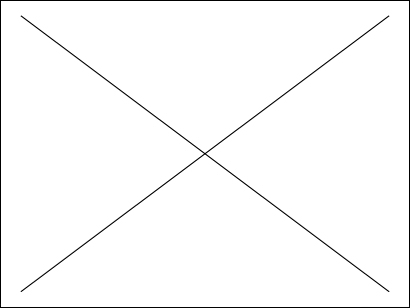Le fort Saint Jean, l'exposition « Des exploits, des chefs-d'œuvre », les passerelles et le toit-terrasse du J4 seront exceptionnellement fermés le 2 mai.
Le musée reste ouvert, l'entrée sur le site et dans les expositions se fera par l'esplanade aux horaires habituels .
Livre - Mira Schendel
710.3 SCH
Description
Livre
Tate publishing
Pinacoteca do Estado de São Paulo
Shendel Mira 1919 - 1988
Barson Tanya 1972 - ...
Palhares Taisa Helena Pascale
Dercon Chris 1958 - ...
Mesquita Ivo 1951 - ...
Tate modern (Londres)
Museu de arte contemporânea de Serralves (Porto, Portugal)
Pinacoteca do Estado de São Paulo
Presentation materielle : 1 vol. (256 p.)
Dimensions : 27 cm
Tate Modern will stage the first ever international, full-scale survey of the work of Mira Schendel (1919-1988) from 25 September. Schendel is one of Latin America’s most important and prolific post-war artists. Alongside her contemporaries Lygia Clark and Hélio Oiticica, Schendel reinvented the language of European Modernism in Brazil. The show exemplifies how Tate is continuing to rethink and re-present the history of modern and contemporary art by showing artists who established their careers outside Europe and theUSA. The exhibition brings together over 270 paintings, drawings and sculptures from across her entire career, many of which have never been exhibited before. Highlights include her Droguinhas (Little Nothings) 1965-6, soft sculptures of knotted rice paper in the form of malleable nets, originally exhibited in London (Signals, 1966); and the Graphic Objects 1967-8, a group of works that explore language and poetry and were shown at the 1968 Venice Biennale. Other important works in the show are Schendel’s early abstract paintings, among them Tate’s Untitled 1963; her later monotype drawings on rice paper, of which she made over 2000; and the installations Still Waves of Probability 1969 and Variants 1977. Schendel’s final complete series of works, abstract paintings entitled Sarrafos (Battens) 1987, are also included. The Sarrafos are white monochromes with a black batten extending from their surface, addressing the body, space and environment of the spectator. Mira Schendel was born in Zurich in 1919 and grew up in Milan. After the war she lived in Rome before moving to Brazilin 1949. She settled in São Paolo in 1953, where she married Knut Schendel, and where she lived and worked until her death in 1988. Although brought up as a Catholic, Schendel was persecuted during WWII for her Jewish heritage. She was forced to leave university, due to anti-Semitic laws introduced in Italy, and flee to Yugoslavia where she lived from c.1941-45. Schendel’s early experience of cultural, geographic and linguistic displacement is evident in her work, as is her interest in religion and philosophy. In São Paulo she developed an extraordinary intellectual circle of philosophers, poets, psychoanalysts, physicists and critics – many of them émigrés like herself – and engaged in correspondence with intellectuals across Europe, such as Max Bense and Hermann Schmitz. Among key exhibitions featuring Schendel’s work were the first and numerous subsequent editions of the São Paulo Bienal; the 1968 Venice Biennale; a solo show at the Galeria de Arte SESI, São Paulo (1997); and Tangled Alphabets with León Ferrari at the Museum of Modern Art, New York (2009). Mira Schendel is organized by Tate Modern and the Pinacoteca do Estado de São Paulo in association with the Fundação de Serralves, Museu de Arte Contemporânea, Porto. It is curated by Tanya Barson from Tate Modern and Taisa Palhares from the Pinacoteca do Estado de São Paulo and is the first major project to take place since the institutional partnership agreement signed between Tate, Pinacoteca and the Estado de São Paulo in 2012. The exhibition is accompanied by an illustrated catalogue by Tate Publishing and a programme of talks and events in the gallery.
DERCON Chris, MESQUITA Ivo, Foreword: Tate Modern and Pinacoteca do Estado, p. 4 PALHARES Taisa, Machine generated contents note: Living in between: Mira Schendel’s Poetics, p. 8 BARSON Tanya, Mira Schendel, Signals London and the Language of Movement, p. 18 ALVES Caue, Mira Schendel in Dialogue with Vilem Flusser: Language and Reality, p. 32 WHITELEGG Isobel, The Other World Is This: Mira Schendel’s Participation in the 10th Bienal de São Paulo, 1969, p. 40 RAJCHMAN John, Mira Schendel’s Immanence, p. 48 Works, p. 61 Mira Schendel Statement, p. 196 GUINLE Jorge, Interview with Mira Schendel Mira Schendel, Painter: Empty Space Moves Me Deeply, p. 198 SALZSTEIN Sonia, Interview with Haroldo de Campos, p. 208 Chronology, p. 216 Selected Bibliography, p. 240 List of Works, p. 242
Published on the occasion of the exhibition Mira Schendel, held at Tate Modern, London, 25 September 2013-19 January 2014, Fundação de Serralves - Museu de Arte Contemporânea, Porto, 28 February-24 June 2014, and Pinacoteca do Estado de São Paulo, São Paulo, 24 July-19 October 2014. - AU@ Bibliogr. p. 240-241
